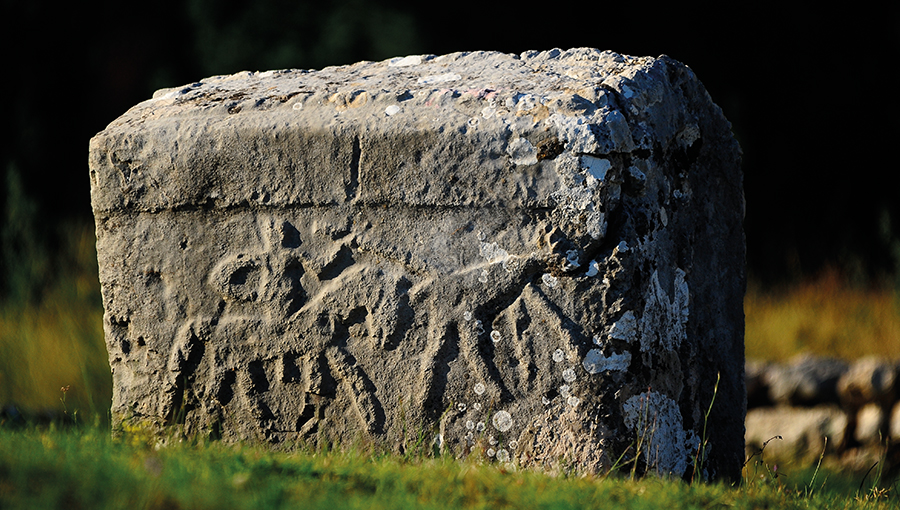Stećci are medieval monolithic tombstones found on the entire territory of the present Bosnia and Herzegovina, parts of Croatia, Montenegro and Serbia. They first appeared in the second half of the 12th century and the most intensive production and decoration periods were the 14th and 15th centuries. In the 16th century their use completely ceased. Out of 70,000 odd tombstones recorded at 3,300 odd sites, about 60,000 monuments are located in Bosnia and Herzegovina, 4,400 in Croatia, 3,500 in Montenegro and 4,100 in Serbia.
Stećci can be found as recumbent and upright stone monoliths. The recumbent monuments represent a primary form of stećci. They are found in all of the distribution areas. Artistic shaping of stećci is expressed in their form and decoration.
Along with their highlighted symbolism characteristic of the mediaeval art, decoration motifs also exhibit secular and religious symbols. Generally speaking, the stećci ornamentation reveals the understanding and sensibility of an entire era, both of the people who took part in their creation and of the deceased who found their final resting place under them and upon whose wishes – according to inscriptions – stećci were made.
They were a common tradition amongst Bosnian Church, Catholic and Orthodox followers. The epitaphs written in Cyrillic alphabet.
Their most remarkable feature is their decorative motifs, many of which remain enigmatic to this day; spirals, arcades, rosettes, vine leaves and grapes, suns and crescent moons are among the images that appear. Figural motifs include processions of deer, dancing the kolo, hunting and, most famously, the image of the man with his right hand raised, perhaps in a gesture of fealty.
In Croatia stećci are located in southern parts of the country, i.e. in Dalmatian hinterland (Split county) and on the coastal belt, from the territory of Konavle (Dubrovnik county) to Northern Dalmatia and Southern and Central Lika region. They are the most numerous in the territory of Dubrovnik and Split.
Made as a work of art, as a sculpture, with an intention to make a memory of the deceased immortal, as well as an organic component of the European funerary practice, medieval tombstones – stećci represent a specific phenomenon and a specific synthesis of language and script, religion and custom, history and chronology, culture, art and aesthetics. Their primary interpretative context is Central and South-Eastern Europe as a transitional area of the European culture, marked by intertwining and blending of cultural influences of Eastern and Western Christianity, placed between the medieval West and East.
An outstanding value and European dimension of stećci as medieval tombstones and a specific expression of the medieval sepulchral art is determined by their threefold historic context: West European, Byzantine and South Slavic.
In terms of their number and monumentality, stećci can be to a certain degree compared to the Irish and British high crosses which are also covered with various ornaments. However, they appeared during the Early Middle Ages, and disappeared as late as the 12th century. Furthermore, these crosses were not used solely as grave marks. The same applies to Armenian khachkars – tombstones and memorial monuments created in Armenia in the period between the 9th and 17th centuries, reaching a peak in the 14th century.
